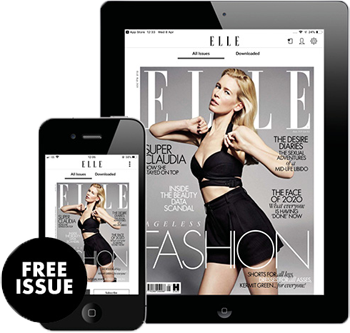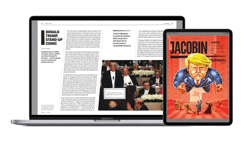
On the retail side, he is “grateful for small mercies” as a big majority of magazines are sold in places where food is sold, therefore the majority of retailers that sell them remain open. However, there is no getting away from a fall in retail sales of around 30 per cent across the board. In addition, the major supermarkets have asked Hearst and other publishers to reduce supply, as they prioritise the sale of food. Sales at convenience stores are up as more of us shop local, but sales in travel and on the high street have dropped to almost zero.
Subscription is a very different story and has proved to be “quite remarkable” during lockdown. New subscriber numbers in the three weeks prior to 23 March were up 30 per cent year on year. In the three weeks following lockdown, they had soared to an increase of 250 per cent compared to the previous year. Some titles, such as Good Housekeeping, saw new subscribers increase by 300 per cent during this period.
Holland says: “We think we’re seeing two or three things happening. The first is people who would normally buy at retail reaching for subscription. Magazine subscription is perhaps more relevant whilst people are at home and shopping from home.”

Right now, we’re less busy, we’re all stuck at home, our media audiences are vast, their attention is greater.
Greater standout
Another phenomenon is that as many companies retreat from advertising and consumers are seeing fewer ads in their inbox or on social media, magazine marketing is standing out more and gaining greater traction.
“Right now, we’re less busy, we’re all stuck at home, our media audiences are vast, their attention is greater. What we’re finding is the advertising that we’re running is gaining far more standout because a lot of brands who would ordinarily be advertising through digital media are retreating. So, at a time when many businesses are pulling back on advertising, we’re actually ramping up and a lot of magazine companies are doing the same,” explains Holland.
In response to this trend, Hearst is buying bigger audiences on social, broader search terms on Google and engaging in more email marketing to broaden the potential readership for its products.
Holland adds: “All titles are seeing double, triple digit growth [in subscriptions], but it’s interesting that it’s the titles that have the older readers that are seeing the fastest growth. For example, Good Housekeeping, Country Living, Prima have a 50 plus readership, whereas Cosmopolitan and Elle are still in growth, but not as pronounced.”
All titles are seeing double, triple digit growth in subscriptions.
Upgrading the digital edition
In response to lockdown, Hearst UK has also brought forward a programme that was already underway to upgrade the reading experience of its digital magazines, particularly when it comes to optimisation for mobile.
Holland admits: “Shamefully we had flat PDFs, so if you read one of our magazines on an iPad or a mobile until now, they would be literally a translation of the print magazine. If you wanted to read an article, you had to zoom in with your fingers and it just wasn’t fit for purpose.”
Elle is the first of its brands to go live with a fully mobile optimised product. “That means you don’t need as the reader to do anything. It will be fully reflowed for mobile. If you read our magazines through the app, the content is completely optimised for the platform that you’re on. Beyond the reflowing, we’ll have shoppable content. If you’re reading about a pair of shoes you can click through and carry on into a purchase journey. Print has never done that. It might mention where you can buy it, but it’s a bit of a dead end. Now if you’re reading an article about this season’s best beauty products, we’ll try to link to all of those products.”
They are prioritising those brands which have a lower subscription take up and are offering free access to the first issue. “The main aim is to build up a big bank of prospects whom we will then remarket to, to move them from ‘Did you enjoy that issue we gave you for free?’ to ‘Here’s a subscription offer, why not subscribe?’”

Instead of putting them in the recycling bin, we thought why not give them to people?
New distribution channels
Another conundrum posed by lockdown was what to do with all of the magazines which now could not be sold at airports or handed out on airplanes and in airport lounges. Hearst’s response was to give them away for free to affluent postcodes, mainly in the London area as that was the easiest to reach. Titles that have been distributed in this way include Elle and Harper’s Bazaar and Hearst worked with Gold Key Media and the ABC to ensure they could be included in its next set of circulation figures.
“That was a thinking on our feet moment if I’m honest. In full transparency, we had a whole bunch of magazines that were printed when the world went into lockdown and very quickly a number of our channels needed fewer copies or no copies. Instead of putting them in the recycling bin, we thought why not give them to people? It’s a nice thing to do, but we put a subs offer in there and we’ve used them as a platform to try and promote the magazine or move people into a subscription offer.”
Holland pays credit to Hearst UK’s business continuity plan, which has enabled a smooth transition to homeworking, adding that without video conferencing platforms such as Zoom and Microsoft Teams, this period would have been “a nightmare”.
What sort of exit strategy is Hearst UK now looking at? “As an exec team or as we call it the strategy team, we meet every week and we’re talking about a number of very important things that we would have been talking about anyway, but I believe Coronavirus has become a trigger or an accelerator for some of these. Topics such as the future of work. We are working in a very different way and some of it has been refreshing and focusing, so we don’t want to lose the best part of how we’re working,” says Holland.
“Clearly a whole bunch of things need to be thought about in terms of our supply chain for print, our advertising business and content creation. We want to take the best bits as we move forward.”
When it comes to the remarkable growth in new subscribers, he adds: “Subscription is already a really important part of the publishing business and it will only grow as we move out of this lockdown into our new reality.”
We are working in a very different way and some of it has been refreshing and focusing.












